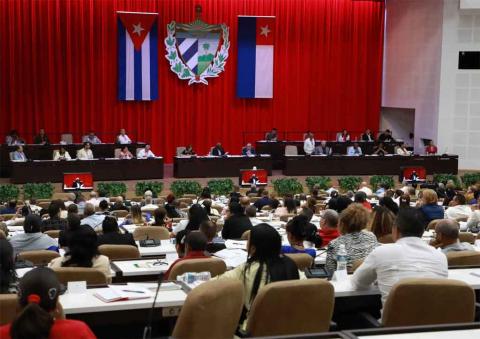


Lawmakers in Cuba’s National Assembly of People’s Power have approved the Code for Children, Adolescents, and Youth, a comprehensive legal framework aimed at implementing public policies to ensure protection and promote the social development of young people.
During the Fifth Ordinary Session of the current legislative period, Minister of Education Naima Trujillo introduced the new code and highlighted that more than 200,000 people contributed their views during the public consultation process.
She explained that the temporary working group responsible for drafting the code included representatives from 28 government bodies, organizations, institutions, and entities, along with experts, academics, researchers, university professors, and other collaborators.
The code draws from several key legal and policy references, including the Constitution of the Republic, the Family Code, Cuba’s Comprehensive Policy on Children, Adolescents, and Youth, the United Nations Convention on the Rights of the Child, and other international treaties related to disability, gender, race, and inclusion.
According to the minister, the code is designed to regulate the full exercise of rights for children, adolescents, and youth, ensure the fulfillment of their duties, and establish an institutional framework to guarantee their protection, participation, inclusion, and contribution to social development.
The code is divided into two main books. One focuses on the specific needs and rights of children and adolescents, and the other on those of youth, defining core principles, rights, duties, and legal safeguards.
Trujillo noted that the law strengthens mechanisms for reporting, responding to, and addressing violations of the rights of these age groups. It also outlines a system to promote youth participation in social spaces and incentive structures that recognize them as key actors in their own development.
In addition, the code sets out practical guidelines for applying the principle of the best interests of the child, assessing evolving capacities, and fostering protective environments.
It includes a specialized protection system against violence and establishes protocols for safeguarding the rights of children and adolescents through institutions, organizations, and individuals, even those without a legal obligation.
The minister emphasized that the code creates two distinct systems of social protection: one for children and adolescents, and another for youth, with a special focus on those in the most vulnerable conditions.
In summary, Trujillo described the code as “a reflection of inclusion, equity, protection, participation, and humanism.” She also affirmed that it represents the ongoing commitment of the Communist Party of Cuba, the State, and the Government to the comprehensive development of children, adolescents, and youth.